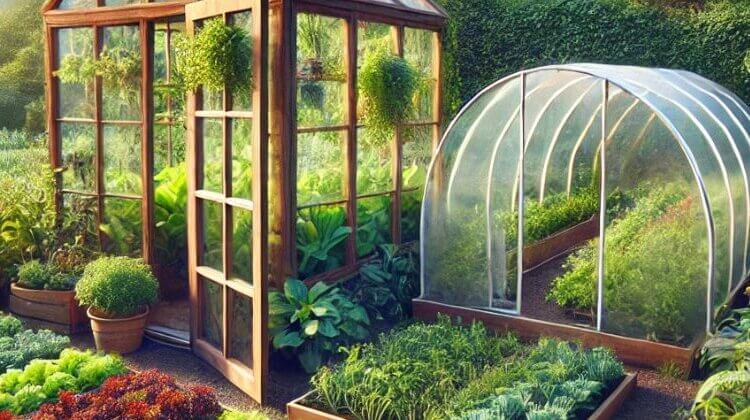
Year-round gardening offers a bounty of benefits, allowing gardeners to extend the growing season and harvest fresh vegetables regardless of the weather. However, not everyone has space or resources for a full-sized greenhouse. This is where cold frames and hoop houses come into play. These structures are cost-effective, space-efficient, and perfect for smaller gardens. In this guide, we’ll explore how you can harness these tools to keep your garden thriving throughout the year.
Understanding Cold Frames and Hoop Houses
Cold frames and hoop houses are structures that help protect plants from extreme temperatures and inclement weather. A cold frame is typically a small, enclosed box made of a transparent lid and insulating material, whereas a hoop house resembles a tunnel with plastic sheeting stretched over flexible hoops. Both serve the same purpose but are utilized differently based on the gardener’s needs. Unlike a greenhouse, which is usually larger and more permanent, cold frames and hoop houses are more adaptable and less expensive.
How to Make a Cold Frame for Plants
Creating a cold frame is a straightforward DIY project that can be completed in a weekend. Here’s how you can build one:
- Materials Needed: You’ll need some type of clear material for the top, such as old windows or a polycarbonate sheet, along with lumber for the frame, screws, and hinges.
- Construction Process:
- Measure and cut the lumber to create a box frame. The back should be higher than the front to create a sloped top for optimal sun exposure.
- Assemble the frame using screws.
- Attach the transparent lid to the frame with hinges, allowing you to open it for ventilation.
- Optionally, paint or treat the wood for weather resistance.
- Placement and Orientation: Place your cold frame facing south in a location that receives ample sunlight. The slope should face forward to capture the most light.
Cold Frame vs. Greenhouse: Which is Better?
Choosing between a cold frame and a greenhouse depends largely on your gardening goals and space. Cold frames are smaller, easier to build and move, and cost less, making them ideal for gardeners working with limited space or resources. Greenhouses offer more space and a controlled environment, which is beneficial for serious gardeners looking to cultivate a wider variety of plants. Consider your needs, budget, and commitment level when deciding.
Ideal Vegetables for Cold Frames
Cold frames are excellent for growing greens like spinach, kale, and lettuce, which can tolerate lower temperatures. Other vegetables such as carrots, radishes, and beets also perform well in a cold frame environment. Plant these in early spring or late fall to extend the growing season.
Choosing the Best Materials for Cold Frames
The most common materials for cold frames are glass and polycarbonate. Glass is heavy and fragile but offers excellent clarity and longevity. Polycarbonate is lighter, safer, and retains heat more effectively but can be more expensive. Recycled materials like old windows can also be used effectively and add character to your garden.
Extending Your Growing Season with Hoop Houses
Building a hoop house can further extend your gardening season. Here’s a simple guide to constructing one:
- Use flexible piping or metal rods to create hoops over a garden bed.
- Cover the hoops with a clear plastic sheet and secure it in place.
- Ensure the plastic is tight and well-anchored to withstand wind and snow.
Hoop houses are simple to erect and dismantle, making them an excellent option for temporary seasonal extension.
DIY cold frames and hoop houses are practical solutions for gardeners looking to extend their growing season without the expense and permanence of a greenhouse. By following the steps outlined above, you can build your own and enjoy fresh produce year-round. We encourage you to embrace these projects and share your success with the gardening community.
Have you tried building a cold frame or hoop house in your garden? Share your experiences and photos on social media to inspire fellow gardeners! For more gardening guides and tips, subscribe to our newsletter. Happy gardening!


Leave a Reply